Fix SSD SMART Status Bad, Backup and Replace Error [2023 Easiest Guide]
Computing devices have been introduced with multiple mechanisms for the optimization of processes. Different indications and material adjustments have been included in the system to improve the overall performance of computers. SMART (Self-monitoring, Analysis, and Reporting Technology) is a system associated with the storage devices of computers. This article will recognize the SMART status bad SSD error.
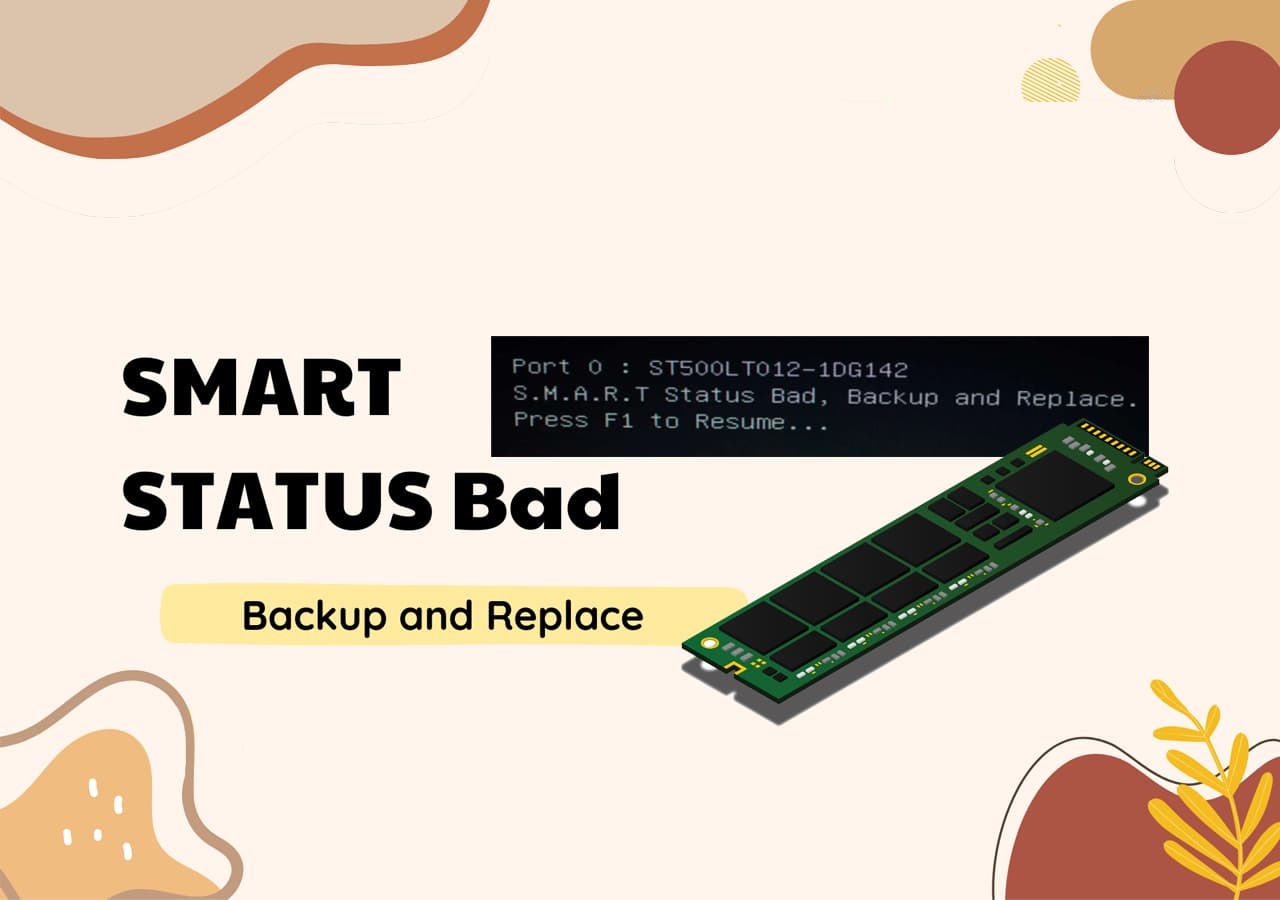
While this is directly associated with the specific SMART system, many people are confused in dealing with its operation. Let's get ahead with the details to understand the error and what this article will bring for the users as a solution to the recognized problems.
What To Do When SMART Status Bad on SSD
As you have understood the essential details about the SMART status bad on SSD error, we will continue our discussion in figuring out the actions that should be executed after recognizing it. Look into the provided solutions that can be considered on observing the SMART status bad SSD error on your computer.
1. Disable SMART Test from BIOS
Disabling the SMART test from the BIOS is the first thing that can be considered to avoid viewing the error now and then. There is a possible chance that the specific error is occurring for no particular reason, perplexing the user themselves. Thus, it is best to turn off this service as it can profoundly influence the entire operation. Find out in the following steps how one can turn off the SMART system from BIOS:
Step 1: Try rebooting your computer by restarting it and using the "F2" or any particular button that helps you enter the BIOS.

Step 2: Proceed into the "Advanced" tab from the BIOS settings and continue to select the "SMART settings" option. Navigate next using the appropriate buttons and turn off the "SMART Self-Test" option to "Disabled". Exit the BIOS mode and restart your computer normally.

If the error involving the SMART status is still causing issues, you will have to work on the following guides to find the appropriate solution to the problem.
2. Check SSD SMART Test Status
The SMART status bad SSD error can prevail and might need a proper authoritative solution to resolve the problem. In such a scenario, using a third-party tool is the perfect option to determine the underlying issues with the storage device.
Qiling Disk Master is the brightest option for checking and resolving the SMART SSD test status. Its Disk Health acts as a reliable source for managing the SMART SSD test. For those who intend to fix the problem with the disk drives once and for all, it is best to download and run this software to test the SSD SMART status.
How To Check SSD SMART Test Status with Qiling Disk Master
We will try to understand all the steps involved in checking the SSD SMART test status, where the primary tool in use would be the Qiling Disk Master:
Step 1. Launch Qiling Disk Master and click the blue arrow to activate the "Disk Health" feature under the "Tools and utilities" tab page.
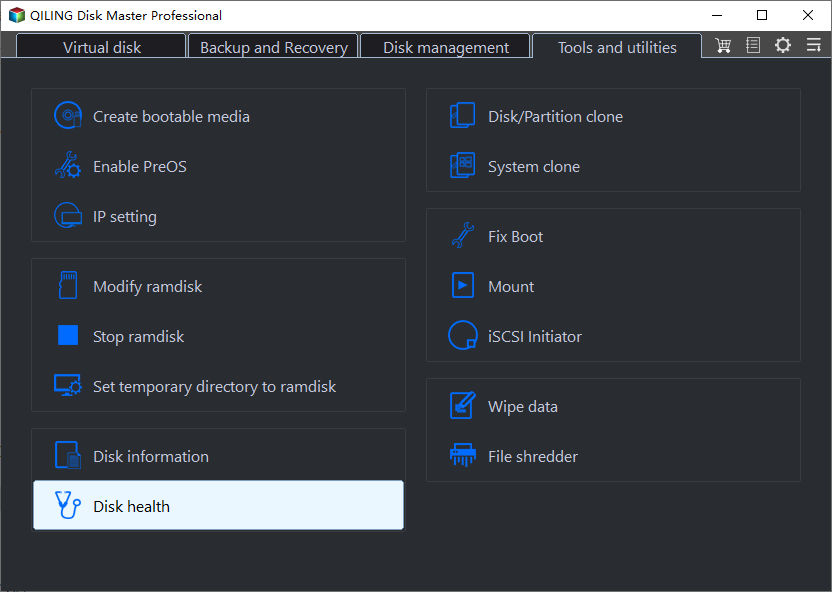
Step 2. Select the target disk and click the "Refresh" button. Then, you can see the health condition of your disk.

How To Interpret Results Properly?
One major issue associated with using this third-party tool involves a misinterpreted status. If the status is not appropriately judged, the user can lead to fatal and unprecedented results. Thus, you should look into the provided key below to understand the different dynamics included in the results that help you determine the status of your storage device.
- Status: The four metrics of "Good, Caution, Bad, and Unknown" will be displayed against the status of the storage device.
- Temperature: For this metric, there would be two indications, namely, "Lower than 60 degrees Means Good" and "Higher than 60 degrees Means Bad."
- Lights Color: The user will receive specific light colors against the SMART status, where "Green" means a good result and "Red" is equivalent to a bad outcome.
For those who receive a proper and good result can continue using their storage device. However, when the results are out of control, and the SMART status is bad, SSD needs replacing; look into the next part and replace the device successfully.
If you think the above provided tips are useful to detecting SSD SMART status, feel free to share the guide to help more of your frineds online for minitoring their SSD health states:
3. Backup SSD Data and Replace It With a Newer & Healthy Disk
If you are facing issues with your storage device and the SMART system has potentially recognized the threats, evacuation of the data and replacement of the storage disk is the immediate solution. When backing up the SSD data, Qiling Disk Master is the best option for backing up data properly. The service makes it easy to transfer all sorts of data from one computer to another.
For a step-by-step guide, refer to this page:

How to Backup SSD to HDD Automatically
Automatic SSD backup is necessary, especially after migrating operating system (OS) to your SSD. Follow this article, and backup SSD to HDD automatically.
Once you have backed up your data, you need to continue replacing the disk with a new one. For that, we will be providing the steps to carefully execute the task without any discrepancy:
Step 1: Start by confirming the M2 slot on the computer's motherboard. This will help you determine the type of SSD that can and should be attached to the computer. Also, look into the location of the hard drive or SSD present on the computer.
Step 2: After confirming the location, unscrew the SSD heatsink cover that would be on the motherboard.
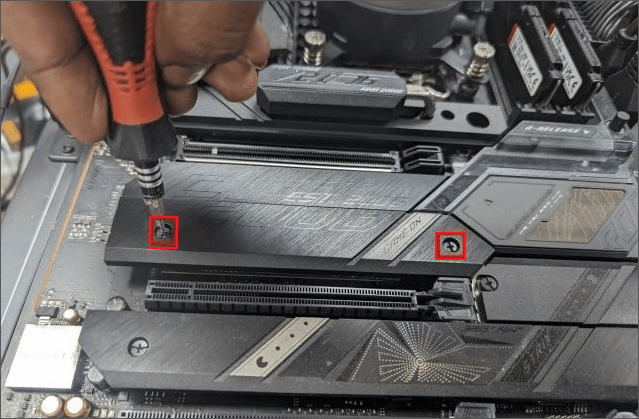
Step 3: Slide the new SSD into the slot under a 45-degree angle. Failure to do so will lead to damage to the SSD drive.
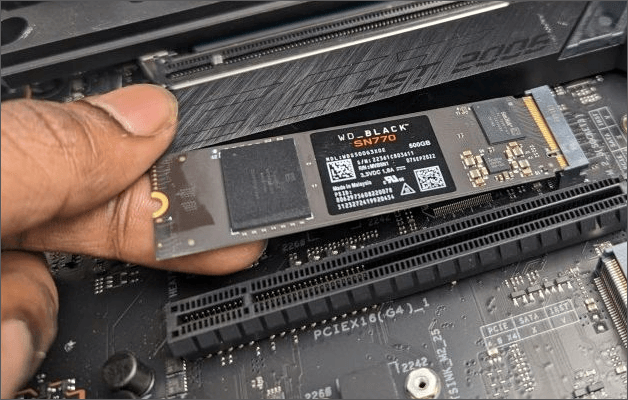
Step 4: Press the SSD from the opposite end as it is attached to the slot. Connect the heatsink and tighten the screws to successfully replace the drive.
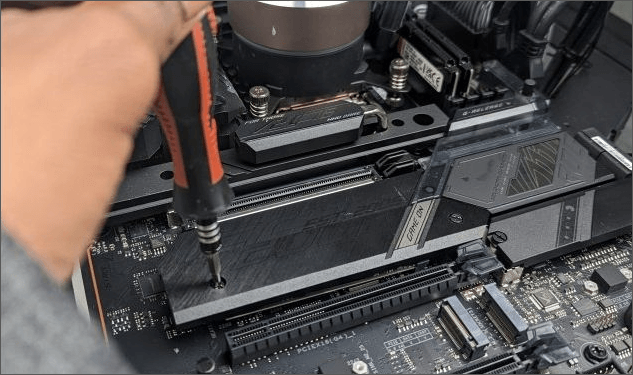
So, this is the overall procedure of fixing SSD S.M.A.R.T status bad error. To help more people out of this issue, feel free to share this page to your social network:
What SMART Status Bad Error Is
Our discussion will start with the understanding of what the SMART status bad SSD error is. This particular indication exists for the SMART system that is directly connected to a computer storage device. HDDs (Hard Disk Drive) or SSDs (Solid State Drive) are the direct associates of the SMART system. If the hard drive fails or an issue is detected within it, the specific error comes in a display.
SMART system in computers has been designed to provide users with a system for determining the health and performance of the storage devices. While it determines the health, it recognizes the potential warnings in the connected devices in the computer. The question that comes to the mind of many users is; what does this error represent?
The SMART status bad SSD error message represents a pre-emptive warning related to any storage device connected with the system. Furthermore, it indicates that the particular device is about to fall, which can be a perpetrator to data loss and instability in the operations of the computer. The computer's performance is what is likely to be protected with the help of this error.
Also Read: How to Bypass SSD Failure Error.
Tips To Prevent SSD SMART Status Bad Issue
As you have understood the operations of the SMART status bad SSD and the ways it can be fixed, we will now proceed to know the tips that should be used to prevent the particular issue. Follow the provided tips to improve the SMART health state of the SSD:
- You should prefer updating the firmware of your SSD repeatedly. These updates fix the problems of performance within the disk drive.
- The hard drive's temperature is an important factor to keep in mind. Whenever using your computer, try to put it in a cold environment or ensure proper airflow to avoid overheating.
- There should be no physical impact on the SSD drive that is being attached. Such damage can lead to direct data loss or drive damage.
- You need to ensure no power outages by constantly turning the computer on and off. If so, fluctuation can have a particular effect on the stability of the SSD.
- The connected SSD should not be overloaded with the data. If this is done, the SSD automatically slows down, leading to such problems.
Conclusion
This article has comprehensively discussed the entire SMART system in computing devices. While it holds importance in determining the conditions of the disk drives, there is a possible chance of facing the SMART status bad SSD problem.
As a result, this article has discussed all prominent ways to exempt all kinds of issues in the SSD. Furthermore, Qiling Disk Master has been recognized as the best possible technique to fix the problem and monitor the disk's health using the Disk Health feature.
FAQs About SSD SMART Status Bad Issue
We have also outlined some critical questions to consider while learning about the SMART status bad SSD problem.
1. What causes SMART status to be bad on SSD?
There are many reasons for facing the SMART status bad on the SSD drive, which include overloading of the disk drive, power outages and fluctuations while running the computer, or physical damage that leads to a fatal result for the SSD.
2. How do I fix HDD SMART's bad error?
If you wish to fix the HDD SMART's bad error on your computer, the best way is to turn off the respective settings in the computer's BIOS. Reboot the computer and access the "Advanced" settings. Look for the "SMART Settings" and disable the "SMART Self-Test" settings.
3. What is the SMART Status on SSD?
The SMART status, also referred to as Self-Monitoring, Analysis, and Reporting Technology status, defines the status of the hard drive connected to the computer. It gives different indications through which the hard drive's condition can be assessed accordingly.
Related Articles
- How to Move Windows 10 to Another Drive without Reinstalling
- Toshiba USB Flash Drive Write Protected Removal/Format Solutions
- Can C Drive Space Be Extended in Windows 11
- The 7 Best Disk Partitioning Tools Free Download for Windows 11/10 [2023]